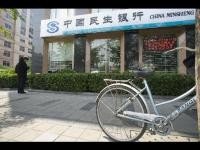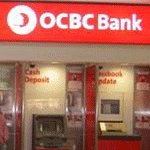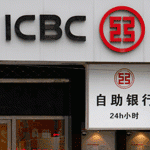News
RBS ditches failing ABN Amro assets in India
Amid reports that talks with Standard Chartered Bank failed over valuation of the assets, ABN Amro bank’s spokesperson said: “RBS is in ongoing discussions with bidders for the remaining assets it has decided to sell in Asia and will make further announcements, as appropriate, in due course” . ABN Amro Bank, was acquired by RBS in 2007, according to a report in The Statesman.ABN Amro’s dismal $1319 profit per employee figure and NPAs amounting to 2.2 % of its assets in 2008-09 compel RBS to talk to bidders. According to RBI data on comparative performance of banks, ABN Amro did not do well on various parameters as compared to other major foreign banks operating in India. Among the important performance parameters, it witnessed a sharp decline in profit per employee to Rs 0.62 lakh ($1319) in the year of 2008-09 from the Rs 7.66 lakh ($16,298) in the previous year. The business per employee figure is an indicator of the efficiency and productivity in a company. For ABN Amro its amount is significantly below the average of Rs 24.78 lakh ($52,723) recorded by 30 foreign banks operating in the country. Besides, low employee profitability, ABN Amro Bank also witnessed sharp increase in its net non-performing asset (NPA) ratio, suggesting a sharp spurt in bad loans. The net NPAs of the bank rose to 2.2 per cent of its assets in 2008-09 from 0.85 per cent, which is only a shade better than the crisis-ridden Citibank.
RBS ditches failing ABN Amro assets in India
Amid reports that talks with Standard Chartered Bank failed over valuation of the assets, ABN Amro bank’s spokesperson said: “RBS is in ongoing discussions with bidders for the remaining assets it has decided to sell in Asia and will make further announcements, as appropriate, in due course” . ABN Amro Bank, was acquired by RBS in 2007, according to a report in The Statesman.ABN Amro’s dismal $1319 profit per employee figure and NPAs amounting to 2.2 % of its assets in 2008-09 compel RBS to talk to bidders. According to RBI data on comparative performance of banks, ABN Amro did not do well on various parameters as compared to other major foreign banks operating in India. Among the important performance parameters, it witnessed a sharp decline in profit per employee to Rs 0.62 lakh ($1319) in the year of 2008-09 from the Rs 7.66 lakh ($16,298) in the previous year. The business per employee figure is an indicator of the efficiency and productivity in a company. For ABN Amro its amount is significantly below the average of Rs 24.78 lakh ($52,723) recorded by 30 foreign banks operating in the country. Besides, low employee profitability, ABN Amro Bank also witnessed sharp increase in its net non-performing asset (NPA) ratio, suggesting a sharp spurt in bad loans. The net NPAs of the bank rose to 2.2 per cent of its assets in 2008-09 from 0.85 per cent, which is only a shade better than the crisis-ridden Citibank.
RBS' latest suitor for sale of China assets: ANZ
ANZ may take another look at RBS banking assets in China after Standard Chartered PLC pulled out of talks to buy the operations, says spokesman. "ANZ would be prepared to look at the RBS assets in China if financial sense could be made of that," the spokesman said. "At present, however, our priority is around regulatory approvals and integration planning for the assets in the six countries where we have already reached agreement with RBS," he said, in a report in the Wall Street Journal. However, ANZ Bank is currently not in any discussions with RBS on the China operations as of yet, he said. ANZ CEO Mike Smith revealed that the bank hopes to amass 20% of revenues from Asia by emerging as a “super regional bank.” ANZ already has some presence in China. It holds banking licenses in three major cities, and holds stakes in Bank of Tianjin and Shanghai Rural Commercial Bank. It is also in the process of getting local incorporation in China.
China Minsheng wants control of U.S. Bank UCBH Holdings
Minsheng, China’s first privately owned bank, is seeking U.S. regulatory approval to boost its holding in San Francisco- based UCBH to at least 50 percent from its current 9.6 percent, according to inside sources.The sources have declined to be identified as the talks are private. Minsheng already has an option to raise its stake to about 20 percent, according to Bloomberg News.Daniel Rosen, principal of the Rhodium Group in New York and a visiting fellow at the Peterson Institute for International Economics in Washington, said that Minsheng “has been the vanguard inside China in terms of trying to be more consumer-oriented,” “It doesn’t surprise me they would contemplate doubling down their position in a second-tier niche American bank like UCBH. It would be a good incremental step for them.” Increasing Minsheng’s investment would allow it to learn more about the U.S. banking market and protect its holding in UCBH. Minsheng has plowed $126 million into UCBH since October 2007 and is the bank’s biggest shareholder. UCBH stock has lost 97 percent since then, cutting the bank’s market value to $79 million. The shares advanced 13 percent yesterday.
Taiwanese want expenses limited to card loads
A Visa survey revealed that 68 percent of Taiwanese consumers are interested in using Visa Prepaid cards as an alternative payment tool. Furthermore, the Visa Prepaid Card Preference and Usage Survey found that 83 percent of respondents said they were interested in using a Visa Prepaid card because it could help them better control their expenses by limiting their spending to the amount loaded on the card. Forty-three percent of respondents viewed it as an ideal cash/check alternative for everyday purchases, while 38 percent thought it very convenient because they did not need to open an account or hold a credit line with a bank to use Visa Prepaid cards.Among respondents who are interested in prepaid cards, 95 percent noted a preference for the reloadable version over the disposable version.Marco Ma, Country Manager of Visa Taiwan, said, “Visa Prepaid cards enable many consumers – even those without traditional banking relationships – to access preloaded funds to make everyday purchases, pay bills and make purchases online. Visa Prepaid cards can open up secure and convenient card payments to those who do not have bank accounts.”The survey also found that 70 percent of respondents agree to having a ceiling set on the amount loaded on the card.
Andhra Bank and Bank of Baroda: together for Life (insurance)?
Presently a corporate agent of LIC, the public sector lender has now formed a joint venture with UK-based Legal and General Plc Insurance Co and public sector Bank of Baroda (BoB) for the launch of its new life insurance products. In a report in the Business Standard, Andhra Bank Chairman and Managing Director RS Reddy said, “The joint venture is going through formalities. We expect some products to be ready in the first quarter of the next financial year.” The venture will focus on creating new products mainly for the rural markets. “Legal has a long product range,” he said, adding both Andhra Bank and Bank of Baroda have an experience in bancassurance and an established network in rural markets.
Bank of Baroda’s Emirates operations booms 3-fold
Phenomenal growth in its United Arab Emirates operations has left the Bank of Baroda (BoB) eager to expand operations in the area.
RBS' Asian assets sale flops
Talks between Standard Chartered PLC and Royal Bank of Scotland Group PLC (RBS) for the sale of RBS' assets in India, China and Malaysia seem to have flopped due to disagreements in pricing, according to a report in the Wall Street Journal.
DBS to open 100 branches in Indonesia by 2012
DBS CEO Koh Boon Hwee reveals DBS' latest plans for expansion in Indonesia: to open 100 branches and look for acquisitions in the next three years.
OCBC goes for kiddy’s money in Malaysia
After garnering a huge success with their children’s savings program in Singapore, OCBC is eager to spread the word further in Malaysia, according to Asiaone.
Rebuilding Trust and Trade in Asia
As the credit crisis impacted Asia’s supply chains, trust was badly damaged. Global banks, with their cross-border expertise and trade finance tools, are playing an important part in the rebuilding process. Estimates suggest that between 20,000 and 30,000 SMEs went out of business in southern China during the peak of the global slowdown. That pattern, if not the magnitude, was repeated right across Asia. Not surprisingly, trust evaporated as buyers and suppliers questioned each other’s ability to deliver their side of the bargain. Back to basicsAlthough the economic outlook has improved since, trust, once broken, takes time to recover. Global banks, with a range of trade finance tools to fit every stage of the risk cycle, are strongly positioned not only to support trade through this process but to track the changing levels of confidence between buyer and supplier. The credit crisis saw a flight to safety, and in trade finance this was evident in the increasing popularity of letters of credit (L/Cs). While these are among the most secure instruments available to international traders, they are document intensive. This is less of a problem for a single trade, but more of an issue when they are being used for bigger supply chains. Companies are therefore increasingly turning to banks to handle document preparation and manage the supply chain efficiently through online systems that enable both buyer and supplier to track and monitor each phase of the process. From here, we are seeing traders gradually moving onto documentary collections (D/Cs). Less expensive and complex than L/Cs, they leave the exporter facing slightly more risk, and reflect a growing level of trust between buyer and supplier. Working capital solutionsIt’s important to remember, however, that over 70% of global trade is still on open account terms. Here trade finance can play a key role in keeping the wheels of trade turning in conditions that might otherwise cause it to grind to a halt. For example, whereas previously a supplier might have mortgaged assets to raise working capital, they may now find this route blocked because of lower asset values, raised interest charges and more cautious lending practices. By guaranteeing that the buyer will pay, banks can strengthen the entire supply chain. Suppliers use the bank’s guarantee to convert invoices into cash at better discount rates. Buyers, by negotiating better deals from their suppliers off the back of cheaper credit, can improve their bottom line. A major UK clothing brand, which sources many of its distinctive fabrics in the Far East, had invested a lot of time and money building up a supply network based on offshoring and low cost sourcing. Many of these suppliers were struggling as local finance dried up and demand dropped. Not wishing to risk losing their suppliers – nor wanting to pay a premium to keep them afloat – the retailer enlisted RBS’s help. By leveraging their strength as a buyer we were able to help improve their key suppliers’ credit terms and cash flow.Not surprisingly, trade and supply chain finance is no longer being seen as a ‘nice to have’ for early adopters, but a key tool in both surviving current conditions and building a stronger future. However, complex supply chains not only need innovative finance solutions, they also need efficient delivery and administration. Over the past few years, banks have used cutting edge technology to greatly improve both the transparency and responsiveness of supply chain management products. Products such as RBS’s MaxTrad™ platform enable clients to streamline their international trade activities and mitigate cross-border risk online. By offering secure, single point access to a full suite of web-based products these platforms have allowed banks to demonstrate their effectiveness across a wide range of areas and play an increasingly important role in delivering efficiency and value for supply chain businesses.The road aheadAlthough globalisation may have suffered a setback over the past eighteen months, there is no sign that the long-term trend will abate. Buyers and suppliers need to look for trade finance solutions from banks which combine local knowledge with global reach. This does not mean, however, that large banks are operating in isolation. Far from it: banks such as RBS work with a range of partners – from trade insurers to local banks and government agencies – to share risk and leverage credit. By doing so we are able to find solutions and build opportunity for our clients. Perhaps there is a theme emerging here. Just as buyers, suppliers and banks are working together to rebuild trade, so financial institutions and governments are co-operating to support economic recovery. Of course, in business we can never be sure how long such togetherness will last; but it does appear that this form of mutual support is helping Asia’s exporters to gradually regain confidence.
HSBC: Failed in America, try Hong Kong (again)
After its painful foray into the American subprime market, HSBC is now re-focusing on Hong Kong in emerging markets.
Shanghai Pudong Bank completes $2.2 billion share placement
The bank said it placed all shares with a 1 year lock up from selling to institutional investors as other banks line up to refresh their capital base.
China bets the bank on Thailand
In a stunning move that will have regional banks in Asia wondering when the Chinese will come for them, ICBC has just agreed to fork out $545 million to Bangkok Bank for its 20 percent stake in ACL.
CIMB targets Singapore’s retail banking market
Retail banking would broaden CIMB's customer segment coverage with the bank's new operations in Singapore.
ANZ teams CDB to conquer APAC market
Partnership will strengthen CDB's presence in Asia-Pacific region with ANZ as its agent.
BOT vies for reverse mortgages in Taiwan
The bank pushes Taiwanese government to offer reverse mortgage to convert home into cash.
BPI's big cash cow: overseas Filipino workers
Continuous surge in inflow of money from Filipino workers abroad could produce $4.5 billion by yearend.

















 Advertise
Advertise




















Commentary
Generative AI’s role in the evolution of banking
Beyond the Hype: Building Trust in Generative AI for a Secure Financial Future